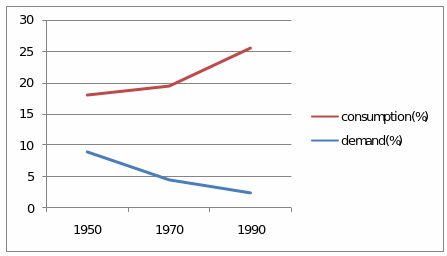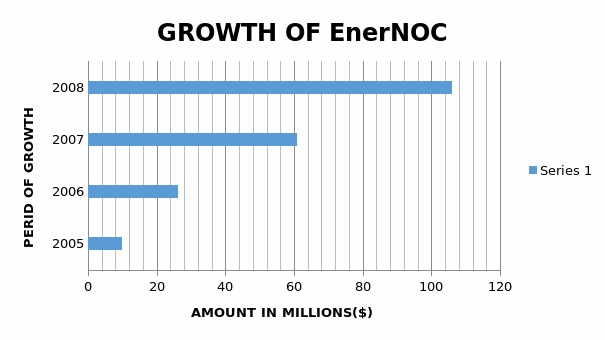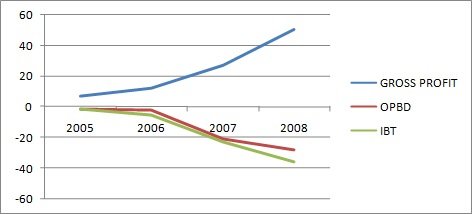Approach and tools needed
The business idea that EnerNOC came with tells of the company founders’ desire to meet the growing demand in electricity. Traditionally, electric utilities supplied to consumers power but when power shortages occurred, it very difficult to meet the consumption demands of the ever –growing number of consumers.
EnerNOC therefore became a monopoly in the provision of its services customers driven by an idea of, “Turning energy savings into sales” (Douglas, 2010).
This ideally was not only intended to spearhead EnerNOC to massive business opportunities but it also through its image before prospective investors.
There, the company had the following questions to answer. How were they to deliver value to customers and convince the investors to venture into their fields of operation thus providing satisfactory services to customers with time as a constraint?
The case study only mentions on the kind of approach that EnerNOC was to use without clearly stating it.
As a new service provider on market, and since the company was still in its infancy stages, coming on market with the theme of providing solutions to power shortages and peak moments consumption constraints, service delivery was therefore its primary concern.
From the case study, EnerNOC approach to establish a Network Operations Center was its major breakthrough to reaching its North American customers through remote control and monitoring technology.
With this technology at its disposal, growth, and therefore market penetration was at its disposal for grabs (Douglas, 2010).
Approach of saving power to sale was also another challenge and perhaps EnerNOC other challenge. The reason is they had never been in any other business of this kind nor was there any documented evidence such service provision.
To EnerNOC founders, from the history of its foundation, this was a business idea that entrepreneurs Tim Healy and David Brewster were bringing to birth and without practical background.
From a consumption analytical point of view, the figures provided for the comparison between consumption of electricity versus generation and transmission during 1950s to 1990s periods shows a reduction in demand due to improved efficiency in generation and transmission to consumers (Douglas, 2010).
The period it takes electric utilities to make a demand difference (drop) of 6.5% is long enough to give EnerNOC an approach clue. And that is improvement of efficiency in generation and transmission and generation within a short period of time than it took electric utilities.
Luckily, EnerNOC was not doing generation and transmission, but saving energy to sale. This was the highest efficiency in the shortest time to be achieved. The figure below shows percentage decrease in demand between the periods mentioned above as opposed to consumption over the same period of time (Carlson school of management, 2010).

Figure 1: analysis of demand and consumption of electricity
From the figure above it is evident that as a low demand in electricity is experienced, there is a sharp rise in consumption. Here, the approach is to curtail the high consumption by approaching as many end consumption units with the sole purpose of negotiating a cut in consumption during peak moments.
From the relationship above, the more saving units that EnerNOC could manage to get, more “negawatts” it could save to sale to utilities (Carlson school of management, 2010).
It is explained that EnerNOC made its sales in two ways, first to the utilities which had to grant access to its customers and place an order from EnerNOC.
This approach could also have taken the course identifying likely customers who could consume power during peak demand then create a link to them through its remote monitoring technology. This has the benefit large sales since the burden of placing an order for negawatts is not solely left to the utilities.
The same way EnerNOC created a notification system to customers to reduce consumption during peak demand it could also create a link with peak demand consumer customers by giving them access to its remote network.
This benefits both EnerNOC and the customer by making sure that whenever there is a power need, that customer in need of power immediately notifies EnerNOC and EnerNOC in turn closes that immediate sale to the utility concerned, instead of waiting for the utility to place an order by accessing the customer (Carlson school of management, 2010).
Capacity improvement
It is from this case study that unlike electric utilities which had physical generation and distribution plants, EnerNOC was a virtual plant. Consumption statistics of the periods shows that the periods 1950s to 1990s showed a sharp rise in the consumption of power.
The solution lay in generational power. However, this was not the idea of EnerNOC. EnerNOC relied on encouraging power savings in order to sale. In first place, regulatory changes were already favoring them since their way of energy sale was environmentally clean (no emission of carbon dioxide).
With all this at their disposal, EnerNOC could only produce 700MW of power to sale. If we consider growth of EnerNOC during the business period of 2005 to 2008, the figure below analyses growth in profits of the company over the same period (Carlson school of management, 2010).

Fig 2: EnerNOC energy sources. Growth trend between 2005 and 2008
It is evident that there was a significant rise in growth over the period in question. However, this is only a portion of an enormous growth opportunity. At this point they are faced with the following issues to address:
- Was the company willing to expand its capacity by also switching to low cost sources energy like wind and solar in order to improve on capacity? This is not mentioned either in the case study. The advantages of using this kind if energies shall be discussed in table 1, drawing a comparison to other energy sources.
- Was the company willing to take its first growth from regional level to an international level thus exploring and penetrating new markets?
These two issues in my opinion could be positively embraced by the company could spearhead it into profitability. The figure below therefore analyses profitability of EnerNOC based on data provided by the case study for profitability trends.

Figure3: profitability trends on EnerNOC between 2005 and 2008
The figure clearly brings out an upward growth trend but a downward profitability of the company. The company’s net profitability is below zero. This trend is not attractive to investors either.
For a business to attract investors, it should be profitable. EnerNOC’s profitability trend instead scares away investors. To address this they should venture into new markets in order to break even.
It is evident that their operating expenses are higher than their net profit before tax. In order to improve on profitability, the following table gives a suggestion to EnerNOC additional energy substitutes that would improve their profitability while maintaining a low input cost profile (Albers et al, 2008).
Of the four energy options at hand to EnerNOC the next available source of energy to distribute is solar and wind power.
Keeping the sales team dynamic
The sales team comprised of 50% of EnerNOC staff. Closing contracts, both long and short term, depended so much on effort of innovativeness of the sales team. Categorically, the sales team may have been entrusted with different responsibilities at individual level; success of EnerNOC was as a result the sales team.
The company’s current rewarding system is based on small commissions on a regular basis. Realizing the complexity of making sales person, it is clear that special skills were necessary for EnerNoc.
By way of example, from the case study, the sale person was supposed to understand the business and operational dynamics of that individual customer (Albers et al, 2008).
As a result, each sales person was entrusted with a responsibility of tracking down potential customers and closing deals with them. It was a noble decision by the company to retain a base compensation to its sales team, no matter the commissions.
However it was not the mistake the sales person if the sealed contract went sour due non responses from the customers over issues like a company for instance has changed hands and therefore there are contacts.
In that case, the record system up-to-date information about EnerNOC customers is questionable. If sales person fails to receive commissions based on the possibility that a utility does not pay due to communication breakdown between a service provider and receiver, it amounts to demoralization.
Conclusion
EnerNoc has a great potential of growth while making profits if only it could address the issue of capacity expansion, correcting mistakes and rewarding sales people through the suggested ways.
The older system of remitting commissions to sales people at the closure of a deal should be encouraged. Rewarding should also be based on a team as an entity but not on individual basis for sale people selling the same products.
At some point in the case study, it is mentioned that at some point a sales person earned more than a CEO. This is encouraging though it lacks a motivational factor.
References
Albers, S, Murali K., Mantrala, S. G. & Kissan J., (2008). Introduction: Special Issue on Enhancing Sales Force Productivity. Journal of Personal Selling and Sales Management, (28), pp. 109-113
Carlson school of management. (2010). Obstacles to Growth of New Technology Based Enterprises. Web.
Douglas, Y. (2010). Management. Web.